Microsoft Announces Windows 8.1 Update - Desktop as a First Class Citizen
by Brett Howse on April 3, 2014 9:00 AM EST- Posted in
- Software
- Operating Systems
- Microsoft
- Windows 8
- BUILD
- Windows 8.1
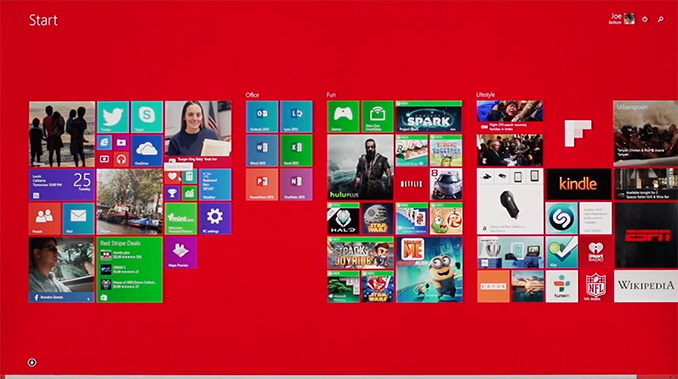
Microsoft’s day 1 keynote for the BUILD developer conference detailed an update to Windows coming on the next scheduled patch Tuesday called 8.1 Update. Notice it’s not called Update 1, which means there may or may not be more of these updates later in the year. Hopefully there’s more.
Windows 8 launched about 18 months ago. With that launch, Windows was put on a rapid release cycle, which resulted in Windows 8.1 a mere 12 months later. When Windows 8 launched, “touch first” was the talking point used during the reveal. Windows 8 was likely the biggest ever change to Windows, and was a pretty big gamble on Microsoft’s part. For the project head of Windows 8, it didn’t work out with Steven Sinofsky leaving the company only a couple of weeks after the launch event. As a product launch, it certainly didn’t halt the decline in PC sales that were already beginning.
Much has been said of Windows 8 since its launch, some of it good, some of it bad. Most of the bad focused on how Microsoft forced a touch interface and mobile app system onto a market that was, especially at the time, dominated by non-touch PCs and devices. A lot of the criticism was valid, and was likely exaggerated due to there being no way to re-enable any legacy mode. In the history of Windows, there has always been a way to go back to the old version’s look and feel, but keep the new functionality. In the case of Windows 8, this didn’t happen, and many people don’t appreciate that.
To add extra fuel to the fire, even the touch first interface (called Modern by this point) wasn’t finished. Many settings and functionality could only be accessed by the desktop control panel which was decidedly non-touch. Even though Windows 8 was actually quite a good touch based operating system, it wasn’t finished. The design decisions of the touch based system were all based on edge gestures, but there were no obvious way to know that.
Windows 8.1 addressed a lot of the complaints. The Start Button was back – even if its functionality was not the same. The Start button could be configured to launch into the All Apps mode rather than the Start Screen of Windows 8. You could choose to boot directly to the desktop. And on the touch side, some of the gestures were changed, and many more of the PC settings could be configured from the Modern interface. As a bonus (or not – depending on who you are) everything was synced with SkyDrive, and SkyDrive was installed on both x86 and ARM versions for file sync with the cloud. The built in apps were much better, the store was overhauled, and more people were happy.
If Windows 8 was touch first, then 8.1 Update is most definitely keyboard/mouse first. Almost every single feature added in the Update is geared towards making the Desktop environment a first class citizen again, and it’s wonderful – and I say that as someone who uses and enjoys Windows 8 and 8.1 every day.
Traditional PCs – desktops and laptops – will now boot to the desktop by default. PC makers building tablets or types of hybrid machines with touchscreens can now set a flag to identify the device as a Slate, which will make them boot to the Start Screen. The Modern interface is now aware of how it’s being used. If you are using touch, it acts just like 8.1, but if you are using a keyboard and mouse, there are now context boxes on the right click menus. Moving the mouse to the top of the screen reveals the traditional minimize and close options. The task bar is now available on the Start Screen. Hidden functions like Search and the Power button are now available right on the Start Screen by your login ID.
And speaking of the task bar, as in interim step until further Desktop/Modern integration happens is the ability to pin Modern apps to the taskbar. They still open the full screen or snapped Modern app, but it’s an easy way to multitask with desktop and modern apps. Microsoft also demonstrated further integration coming in a future update. Whether that is an 8.1 Update 2 or Windows 9 wasn’t specified, but it brings Modern apps to the desktop in a window. I think this will really increase the usefulness of Modern apps. Full screen on a 10” tablet is fine, but when a desktop is equipped with 22” to 32” monitors, there’s a LOT of wasted real estate by running these apps in full screen, or even split screen mode. This is a huge change from the original vision of Windows 8, and if anything can make Modern apps more useful, this is it.
Also with apps, one of the biggest issues with Windows 8 was that any app you installed dumped at least one tile onto the Start Screen. For Modern apps, this was mostly useful, since the tiles were usually live, but with desktop apps like Office, you could easily get 10-20 new tiles on your Start Screen which was a huge pain. So for Windows 8.1, they removed the auto-created tile on the Start Screen, and put it on the All Apps screen. This solved one issue, but certainly created a new one because once you installed an app, you had no idea where it was. For 8.1 Update, they are adding a text notification at the bottom of the screen to let you know that you’ve got new apps there waiting to be used. I think this is an improvement, but the obvious solution is to add an option in the store to pin the app to the start screen automatically.
And the final piece with the app situation is Universal Apps. At long last, common code can be used to develop for phones, tablets, laptops, and desktops. Visual Studio will now build one application, which can have both Windows 8/RT and Windows Phone binaries. This also enables the store to allow one app purchase to be installed on both platforms without having to re-purchase the app as you do now. The keynote demonstration was the Modern version of Office, coded to WinRT, and running on both the desktop and phone with the same code base. Even better, with the update developers can now target Desktop apps (due to the windowed mode), Tablet apps, Phone apps, and even Xbox One apps, all with common code. This is a big win for developers, and I’m sure Microsoft is hoping it draws more developers to WinRT, which in turn will be a big win for consumers.
Another notable change to Windows 8.1 Update is a new build which enables Windows on low end PCs. Windows has been shrunk, and the memory usage has been reduced, enabling the installation of Windows on devices with 1 GB of RAM, and 16 GB of storage. Previous to this, it’s been difficult for hardware partners to be price competitive with Chrome OS devices and Android tablets because the Bill of Materials would be higher. This is coupled with a new licensing change, where Windows (Windows x86, RT, and Windows Phone) is now available free to OEMs for all devices with a screen size of less than 9”. Although I would never buy a tablet with 16 GB of storage, Microsoft should now be able to be price competitive with Android and Chromebooks.
There are also some additional features for Businesses. Mobile Device Management (MDM) is now extended, and IE 11 now has a compatibility mode which can be enabled for intranet sites which require IE 8 functionality. This feature alone should allow companies that were stuck on XP a new way to get off of the aging OS, assuming they are not stuck with web apps that require IE 6 or lower.
This was an interesting keynote. Windows 8 was all about touch, and this keynote was all about restoring functionality to Windows that people have grown accustomed to over the years. The demos of both Modern apps running in a window with a start menu, and Office as a universal app were certainly a clear indication that the Steven Sinofsky days are over. Windows is changing again. No longer will it be “touch first” but instead be any input method you prefer. And I don’t mean to imply that they are taking away any touch functionality either – both are now equally supported which is how it needs to be.


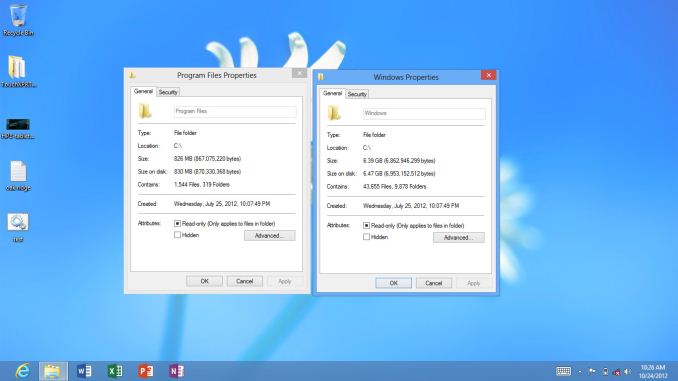
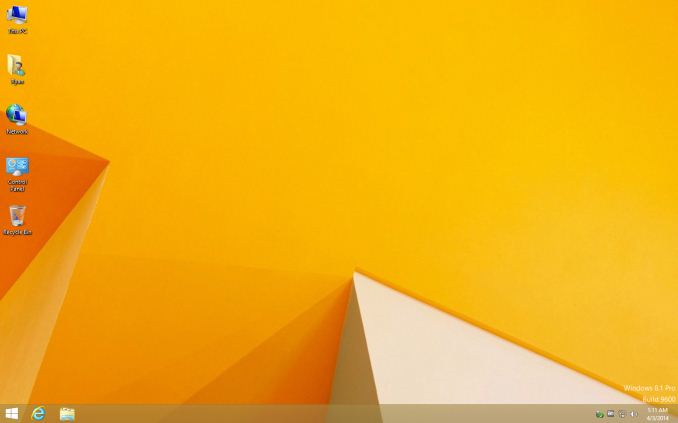
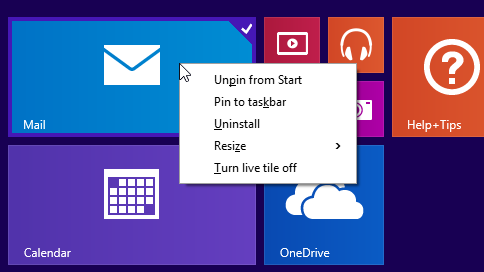
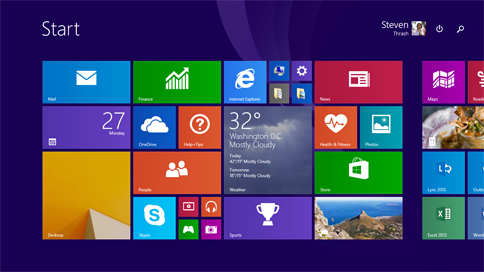
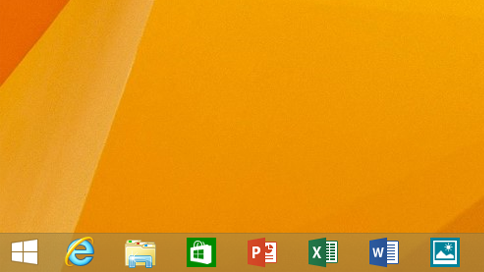
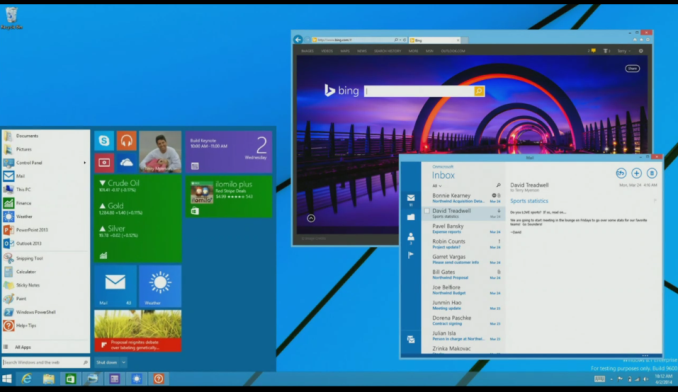

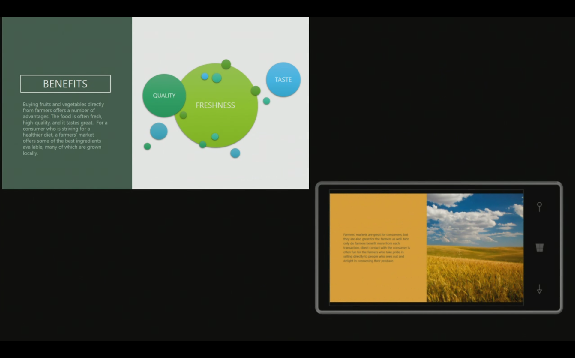








149 Comments
View All Comments
tunapez - Thursday, April 3, 2014 - link
"if performance gains isn't enough for you as a gamer, then, what is?"If negligible improvements are your yardstick, so be it & congrats. I consider obfuscating controls and hardware locking into in my overall evaluation, as well. I also take "App Store" and all the recommendation engine/behavior mod/developer gouging facets into consideration, too.
Where are the real gains to merit a doubling of license fees that I see at retail or to warrant a PC upgrade? Oh yeah, I hear the OEMs got a break, but where's the discounted OEM licensing for me? I see 8 @ Fry's for $130 & computer prices have not dropped. Good for Corps... I can always pay more.
dstarr3 - Thursday, April 3, 2014 - link
I think Windows 8 is definitely shaping up to be a perfectly tolerable OS if you get stuck with it. But the thing is that, yes, Windows 8 does generally perform better. But, people aren't looking at Windows 7 and thinking "Gosh, I wish this was faster." People are stuck in an "Ain't broke, don't fix it" mindset with Windows 7 (and I can't blame them). So of course there's still reluctance to upgrade.But, fortunately, if you get cornered into using Windows 8 on a new device, at least it's becoming more and more bearable. Almost good, in fact.
DARBYOTHRULL - Thursday, April 3, 2014 - link
I am really warming up to the idea of using a 8.1 laptop, but I am having trouble finding something that is competitive with the build, price, and functionality of a MacBook Air. Does anyone have any suggestions?Braumin - Thursday, April 3, 2014 - link
Lenovo Yoga 2 Pro - starts at around $899 and comes with a 3200x1800 13.3" screen (albeit a pentile screen)cbf - Thursday, April 3, 2014 - link
I find the Dell XPS 12 or XPS 13 currently selling for a nice discount at the Microsoft Store (http://www.microsoftstore.com/store?SiteID=msusa&a... are very competitive alternatives to the MacBook Airs.The XPSes are slightly heavier, but the screens are superior to the MacBooks Airs:
- higher resolution (1920 x 1080 vs Air's 1366 x 768 or 1440 x 900)
- IPS (remember, the MacBook Air does not have Retina display options)
- touch screen (definitely better for Windows 8)
The XPS 12 & XPS 13 build quality is also better than the Yoga 2 Pro. The 3200 x 1800 on the Lenovo is actually a problem since a lot of Windows apps don't yet handle it well.
CountvonKramm - Thursday, April 3, 2014 - link
As a Windows user since the advent of '95, I followed the introduction of Windows 8 with some interest as it went through it's development process. Tried the Alpha, the Beta and the release candidates. My hopes were not at a real high point at that time. They have not gained much altitude since. So, I figured that I would simply stick with 7 and be happy. However, since I build and support desktops for my family and friends, need to have a working knowledge of the beast. So I got me an OEM copy of Win8.1 and have coexisted with it for several months now on my main box. The relationship does not appear like it's going to be a long term one, as I am not happy with the fact that it wants to take my $1200 desktop and turn it into a $500 iPad. I can read, I don't need generic symbols on garishly colored backgrounds to hold my interest.While I can see that the system would probably be a good ticket for a phone or a padd device, I don't have either.(Well, I have a phone but I'm silly enough to believe that a phone is for making and receiving PHONE calls. So I don't use it for anything else.) But, as a desktop OS Windows 8.1 falls quite off the mark. I have researched the benchmarks and reviews. Done some benchmarking of my own, and can find no area where it rises superior to it's predecessor. In addition, I find it much slower in reading an optical disc, usb device, or storage drive. I have no desire to turn my data over to anybody's "cloud", I am quite capable of backing up and protecting my own digital content. I don't Facebook, Skype, or Shop for Apps to any large extent. I do like to watch DVDs sometimes, but wait, no payback anymore,(Yes I have read the alleged reasons for this, not convinced.) without purchasing additional software. This being a key point, much of 8.1 seems directed toward getting you to buy from or turn your data over to, Microsoft. I also find glitches in the UI that I have never experienced before. Mainly with the mouse cursor, and some content windows appearing and disappearing at random. Sorry, but I don't see a good reason to get rid of 7. Shame is, I really would like to use it.
Wolfpup - Thursday, April 3, 2014 - link
I have no idea why it would be slower reading from a drive or USB. 8 includes native USB 3.0 support so if anything USB works BETTER. I've certainly never seen anything like you describe.The desktop has a lot of tweaks that improve it from 7.
marc1000 - Thursday, April 3, 2014 - link
@Brett, that start menu is the real one on 8.1update???? if it is, I could give it another chance...also I hope this time they fixed the USB 3.0 external drives disconnecting issues... on 8.0 they work fine, but on 8.1 the OS will try to put the drives to sleep every few minutes and disconnect them. even changing power configurations or registry hacking could not fix this.
http://social.technet.microsoft.com/Forums/windows...
http://www.tomshardware.com/answers/id-1882340/win...
http://blogs.msdn.com/b/usbcoreblog/archive/2013/1...
Hruodgar - Thursday, April 3, 2014 - link
they are supposed to rollback the stupid deep sleep mode with the april update. In the meantime a little program called KeepaliveHD will keep the drives from disconnecting.(Drove me nuts until I started wondering if it was a windows problem rather than my brand new 7=port USB 3.0 hub).marc1000 - Friday, April 4, 2014 - link
thanks Hruodgar! I will search this program. my w8 install is crashing while browsing the web currently, I will test different browsers and later I will upgrade to 8.1u.